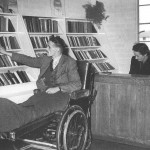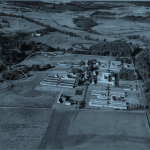Killearn Hospital was built alongside six other hospitals in Scotland as part of the Emergency Hospital Service (EHS). The EHS was born out of the anticipated need to cope with numerous civilian casualties resulting from air raids. However, the impact of air raids in Scotland was not as bad as expected. It was identified that there was capacity for the hospitals to be used beyond their initial remit and continue post-war.
The creation of the EHS resulted in Scotland having an additional 20,500 beds and more nurses and GPs. Consequently, post war Scotland had a significantly better resourced health service than England and Wales.
Killearn was chosen as a hospital site as it was far enough away from Glasgow and the industrial areas which would have been targets, but close enough to serve the likely casualties from these areas. The hospital opened in 1940, in time for the air raids of Clydebank and other Clydeside towns. It received casualties from the “Clydebank Blitz” on 13-14 March 1941, as well as treating injured servicemen and prisoners of war.
By the end of the war Killearn had orthopaedic, neurosurgical and peripheral nerve injury specialist units, which were renowned. However, by the 1970s the rural location of the hospital made it difficult for patients and staff travelling there. Additionally, the building largely consisted of hutments which were built hastily and only expected to serve as a temporary hospital. As a result the hospital was closed in 1972 and the neurosurgery department moved to the Southern General Hospital in Glasgow.
Stirling Council Archives holds some photographs of the hospital library in use in the late 1940s and also an aerial shot of the hospital taken c.1993. The photos of the library were taken by John G. Wilson of Bannockburn.
References
- http://www.ournhsscotland.com/history/birth-nhs-scotland/emergency-hospital-service
- https://m.flickr.com/#/photos/fodeeroy/3300420321
- http://clydeside-images.blogspot.co.uk/2011/09/killearn-hospital-built-for-war.html?m=1

